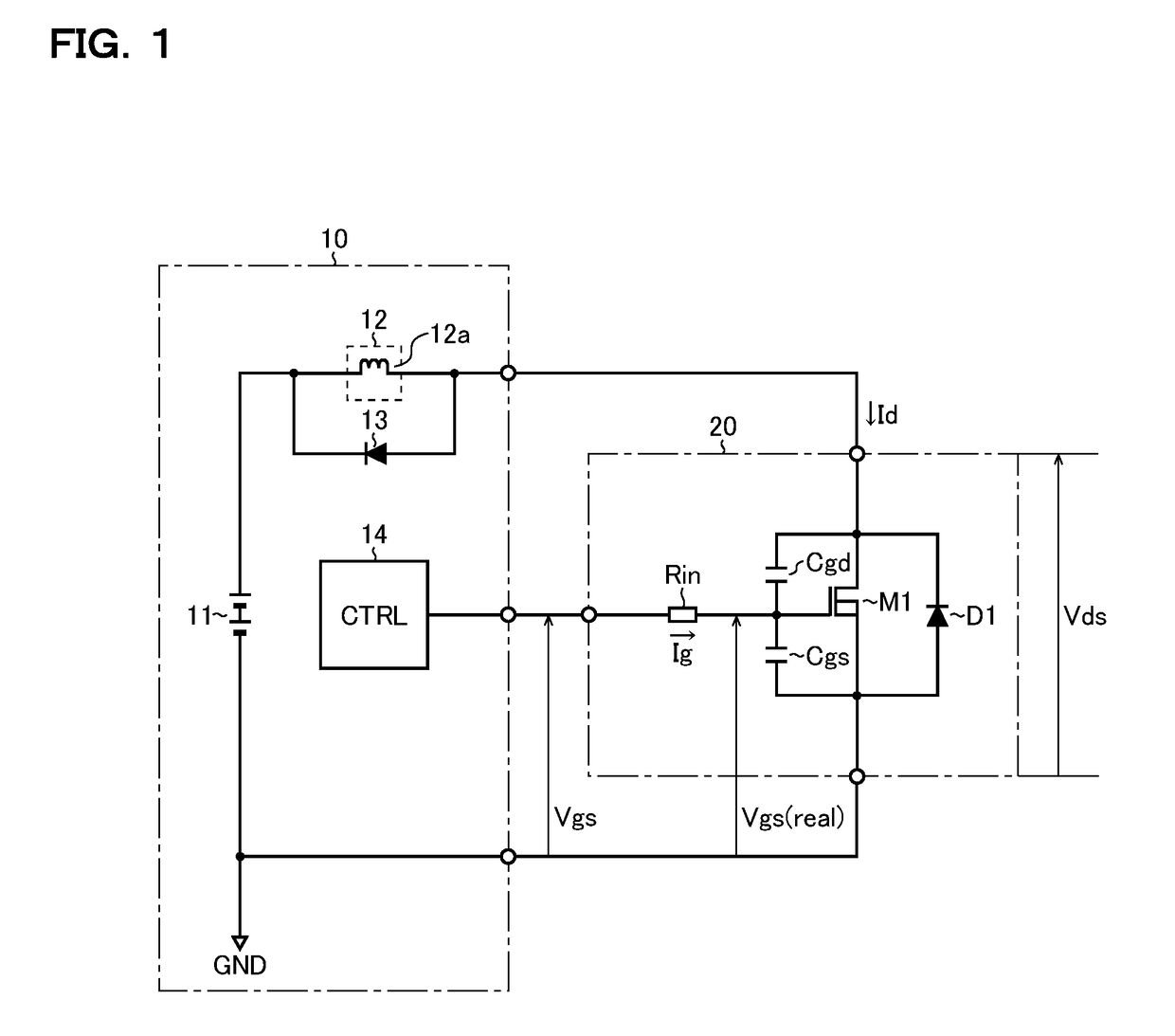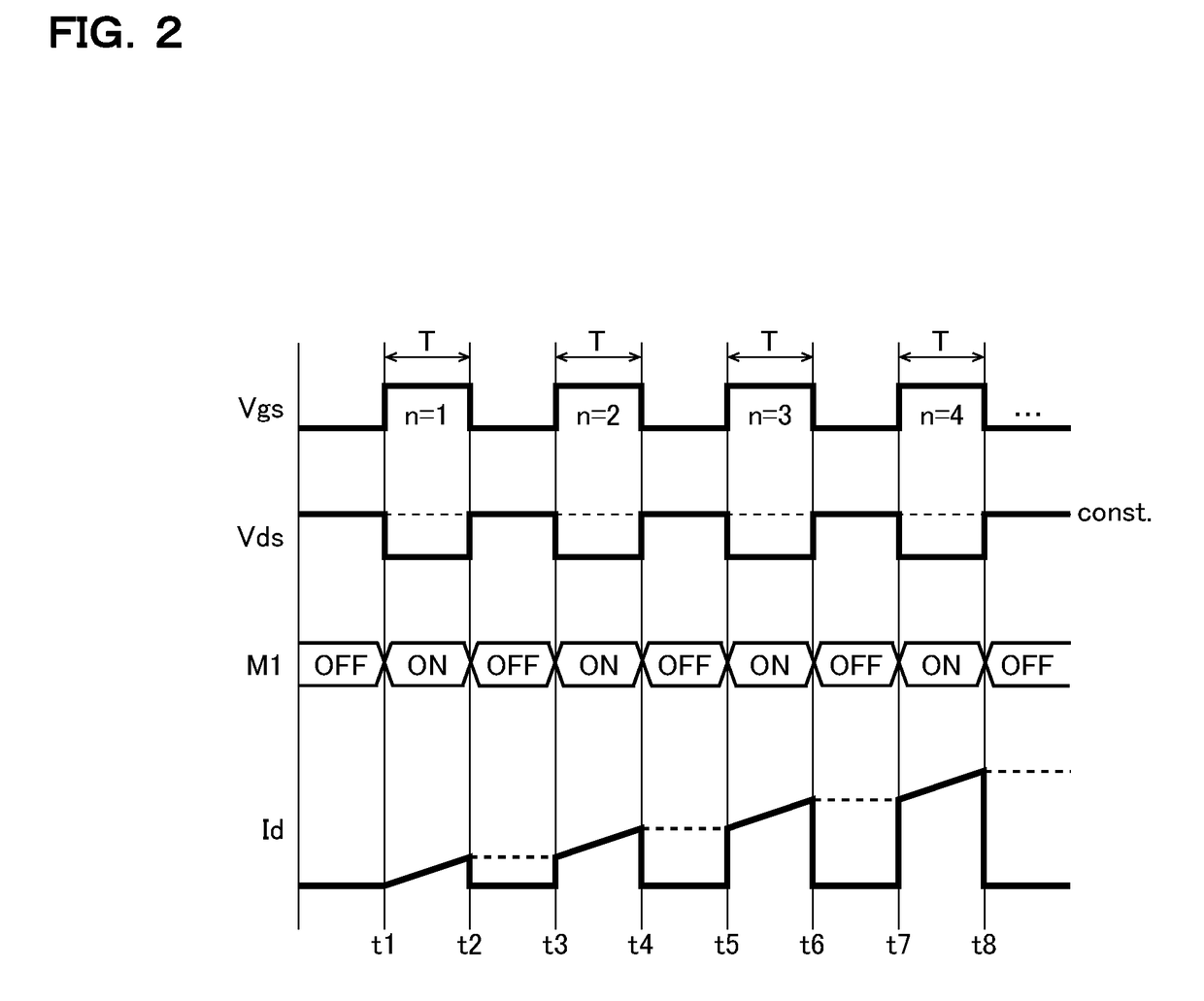Method for measuring current-voltage characteristic
a current-voltage characteristic and characteristic technology, applied in the field of current-voltage characteristic measurement methods, can solve the problems of difficult measurement, deviating from the actual current-voltage characteristic, unrealistic measurement, etc., and achieve the effect of low heat production and high accuracy
- Summary
- Abstract
- Description
- Claims
- Application Information
AI Technical Summary
Benefits of technology
Problems solved by technology
Method used
Image
Examples
Embodiment Construction
[0022]Measurement Device: FIG. 1 is an equivalent circuit diagram showing a measurement device according to one embodiment that is used when a current-voltage characteristic of a switching device is measured. The measurement device 10 according to the embodiment includes a voltage source 11, a current source 12, a diode 13, and a controller 14, and measures the current-voltage characteristic of the switching device 20 (here, the Id−Vds characteristic, that is, the relationship between the drain current Id and the drain-source voltage Vds of the switching device 20).
[0023]The switching device 20 is a semiconductor switching device which is a measurement target of the measurement device 10, and in FIG. 1, an N-channel MOS (metal-oxide-semiconductor) field-effect transistor M1 is used as the switching device 20. In particular, examples of the transistor M1 whose current-voltage characteristic is considered to be preferably measured by use of the measurement device 10 proposed herein in...
PUM
 Login to View More
Login to View More Abstract
Description
Claims
Application Information
 Login to View More
Login to View More - R&D
- Intellectual Property
- Life Sciences
- Materials
- Tech Scout
- Unparalleled Data Quality
- Higher Quality Content
- 60% Fewer Hallucinations
Browse by: Latest US Patents, China's latest patents, Technical Efficacy Thesaurus, Application Domain, Technology Topic, Popular Technical Reports.
© 2025 PatSnap. All rights reserved.Legal|Privacy policy|Modern Slavery Act Transparency Statement|Sitemap|About US| Contact US: help@patsnap.com



